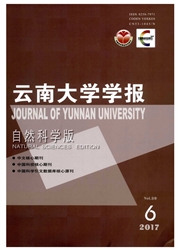

 中文摘要:
中文摘要:
通过计算和分析发现太阳系8大行星质量分布具有内在规律:行星质量取值不是任意的,而是一些特定的数值,每个行星质量由1个或2个基本质量之和构成,基本质量取值符合233律.利用前期提出的理论对此进行了解释,认为该规律与万有引力和质量的起源有关.因为万有引力起源于大尺度微子微团的运动,其引力质量等于微子微团最大速度与广义粒子半径的乘积,在最大速度相同的情况下,微团在向内逐级嵌套过程中,相邻层次的半径具有2倍或3倍的关系,在半屏蔽的情况下形成了行星质量分布的233律.利用233律估算得到行星质量与实测符合得很好,但也存在小量误差,原因在于行星周围微子微团存在密度和压力,所产生的斥力削弱了万有引力,使得测量值略小于估算值.金星和天王星存在较大相对误差的原因就在于其周围微子微团的密度过大,也是行星存在逆向自转和金星转速极慢的原因.通过分析提出了行星形成的"分裂说",认为所有行星都起源于同一母行星,该行星分裂成母木星和母土星,之后2颗行星进一步分裂,形成了4颗土系行星和4颗木系行星.
 英文摘要:
英文摘要:
The inherent law of planetary mass distribution in solar system has been explored by calculating and analyzing. The law can be described as that planetary mass values are not arbitrary, but in term of some spe- cific values, each planet mass is made of one or two basic quality which values correspond the 233 law. The law can be explained by the pre - proposed theory, and it relates to the origin of gravity and quality. Because gravity originates in large - scale movement of micro micelle, gravitational mass is equal to product of the maximum speed of micro micelle and generalized particle radius. In the case of the equal maximum speed, when micro micelles nestes step by step inwardly, the radiuses present 2 or 3 times between the adjacent levels, the 233 law of planeta- ry mass distribution is formed in the case of the half shielding. Planetary mass values estimated by the 233 law are in good agreement with the observations, but exit some slight errors. Because the micro micelle around the planet presents density and pressure which have repulsive force, the weakening gravity leading to the measurement value is slightly less than the estimated values. Venus and Uranus have the larger relative error because of the high den- sity micro micelle around them. It is the reasons of the planet' s reversely rotating and slow rotation velocity of Venus. "Split hypothesis " of planet formation has been proposed by analyzing, namely all the planets are all de- rived from the same parent planet, which can be split into the parent Saturn and the parent Jupiter, and further split to form 4 Saturnian planets and 4 Jovian series parents.
 同期刊论文项目
同期刊论文项目
 同项目期刊论文
同项目期刊论文
 期刊信息
期刊信息
